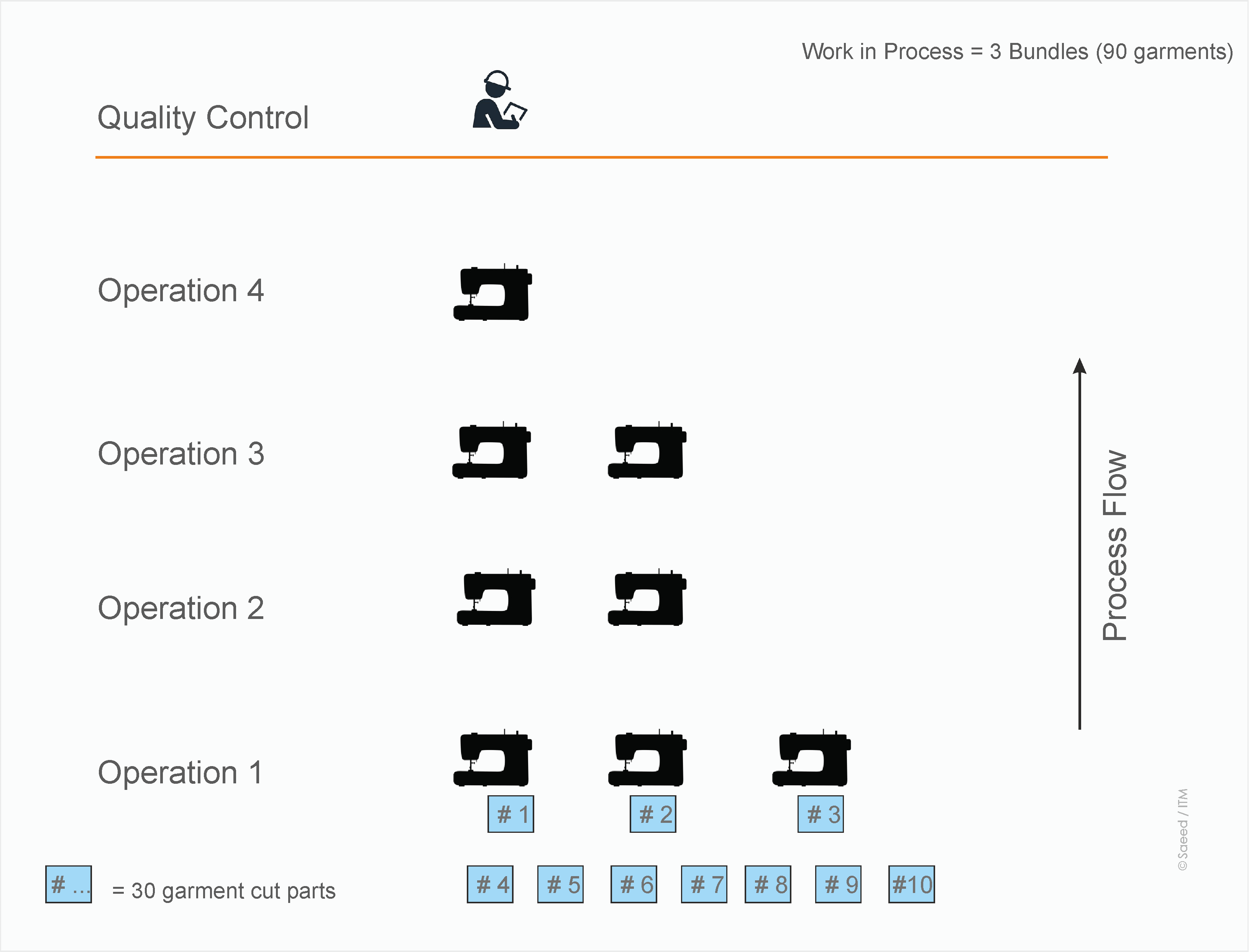Completion requirements
Closes: Tuesday, 5 July 2050, 1:12 PM
Progressive Bundle System
The Progressive bundle system (PBS) is one of the most commonly used production systems used in apparel production worldwide. The progressive bundle system can be explained by the graphical illustration below. It shows an example of a product that is manufactured in 4 production steps and the fifth one is the final quality control. Each cut comprises of 10 bundles and each bundle has cut parts for 30 garments. The moment a bundle is taken by a sewing operator at the first operation, it is considered to be work in process.

Graphical illustration of progressive bundle system
Key features of a Progressive Bundle System are:
- Garments cut parts of any particular design and size are bundled together.
- The number of pieces in a bundle depends upon the cut from which they originate. Usually, a bundle is made up of 30-40 garments.
- Garment operations are stepwise organized in a way that the output of a sewing operation serves as the input of the next operation.
- This
bundle moves between the production system as one single entity. The bundles cut parts are not supposed to disintegrate between an operation.
- Each bundle is identified with its Cut Number from which it originates, as described in spreading and cutting lessons.
- The bundle only moves once the sewing machine operator has completed his/her operation on all of its pieces.
- The the line is balanced on the basis of Standard Minutes Value (SMV) for any operation to ensure smooth workflow and avoid bottlenecks.
- The principle in PBS is the first in first out i.e. the cut which has entered first into the production line, should also come out first.
Advantages
- The investment required for this process is minimum.
- A high level of labor utilization with mixed skill levels can work together.
- Suitable for products with a longer run.
- Chances of lot mixing, size, and shade of cut garments mixing are reduced
Disadvantages
- Requires a lot of work in process
- If a fault is happening at any particular operation, its identification may require a longer time.
- Throughput times are longer
- Material handling is poor.
- Not suitable where variations in style are frequent or bundle size is small.
- Requires large inventory -> higher costs
